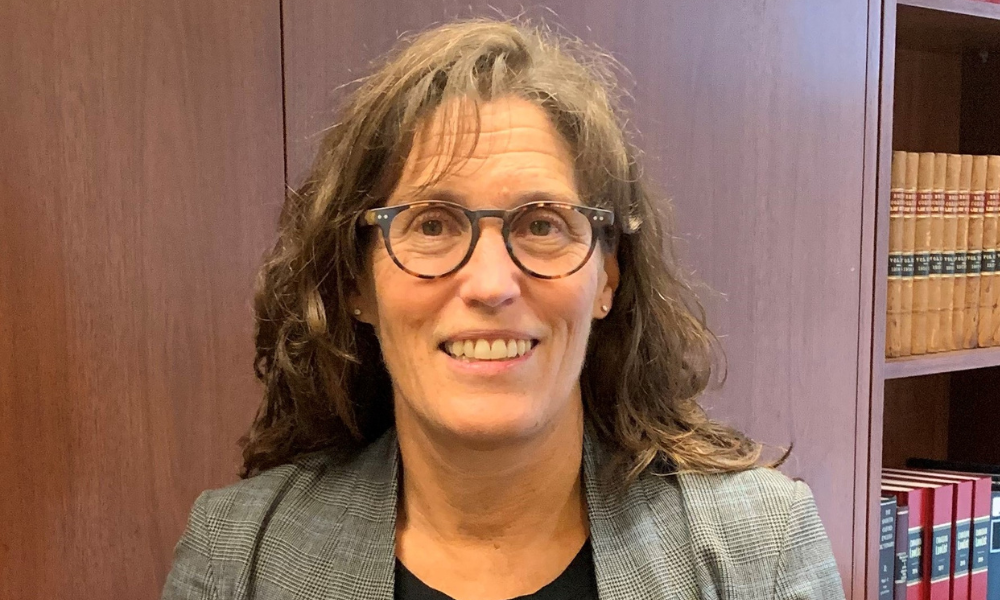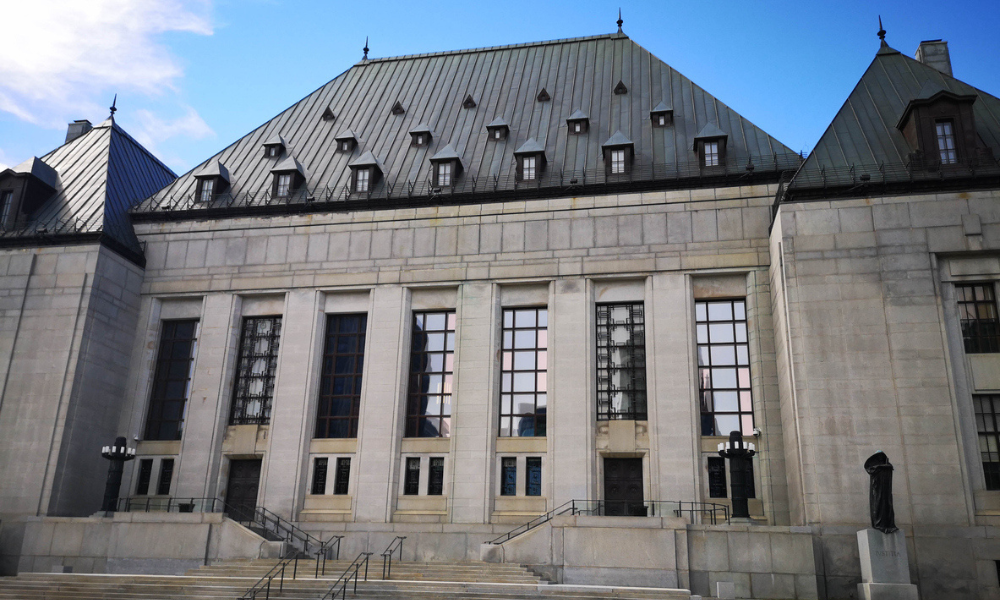Gillespie says many innovations pioneered in COVID have improved access to justice

Canadian Lawyer spoke with Chief Judge Melissa Gillespie of the Provincial Court of British Columbia in a wide-ranging conversation about best practices for litigators, innovation at the court, and virtual proceedings.
Answers have been edited for length and clarity.
How can lawyers best prepare for a hearing?
Objectivity – challenging yourself to examine the facts and the law. Try to foresee the evidentiary challenges and objections in your case. Where possible, assess those challenges and determine whether pre-trial applications are necessary. When preparing books of authorities for the court on contested legal applications, choose the cases that best support your position, fairly illustrate the law, and weave them into your arguments. Do not provide every case that has considered the legal issue. Voluminous legal briefs generally are distracting and can undermine effective advocacy.
What makes written advocacy effective for you?
Point first writing. I appreciate when counsel has reflected deeply on the facts and the legal principles and developed the case’s unique issues. It helps focus everyone and improves advocacy.
What habits do counsel have that should be avoided?
Personalizing conflict. Civility in court is critical to ensuring that the rule of law is upheld and helps counsel to focus on the issues, not the personalities.
What other habits do good counsel have?
They know their case, have command of the legal issues, and have discussed, in advance, with opposing counsel how the litigation will unfold. This allows them to make reasonable time estimates and confidently make reasonable admissions. The litigation is focused on the case-specific issues.
Do you consider the civil justice system a reasonable option for middle-class Canadians?
The Provincial Court hears matters under the Small Claims Act and, with a few exceptions, deals with civil claims from $5001 to the upper limit of $35,000. These rules were amended effective October 2022 to allow for greater flexibility in attendance methods in small claims matters, which can be in person, by telephone, video conference, or other electronic communication. This creates more accessible options that enable different ways for people to attend pre-trial matters and hearings. The amendments also revised requirements and timelines for submitting documents to the registry before a hearing and serving documents and reports on the other parties and updated the rules regarding payment hearings. These amendments help all participants, including self-represented litigants.
Does your court keep statistics?
Our court issues an annual report with statistics. On that same webpage, you can see our statistics regarding our “Provincial Court Judge Complement” and “Time to Trial.”
What are the most significant contributors to delays in the justice system?
Several issues can create delays in the justice system. Our court has taken steps to ensure people have timely access to justice. The success of these measures is reflected in the fact that time to trial is similar now to the pre-COVID rates. For example, the court introduced mandatory virtual pre-trial conferences for some adult and youth criminal trials and preliminary inquiries. Also, some family hearings (family management conferences, family settlement conferences) and small claims hearings (settlement conferences and trial conferences) are heard by telephone or videoconference.
The court remains committed to using technology in appropriate cases to serve court users better and improve access to justice. Remote attendance options provide the flexibility to support greater access to justice for those living in remote communities, vulnerable people, and those unable to attend court.
One of the other innovations we moved towards during the pandemic was using pretrial conferencing in the context of larger criminal cases. In those circumstances, all of those are conducted virtually, and counsel meets with the judge to provide some information before that conference to assess the strengths.
Some of those criminal cases identify the possibility of early resolution, and if not, examine areas where there could be admissions to streamline the litigation process and identify a litigation plan.
Every court now has dozens of practice directions, which impose a burden on justice system participants to comply.
Practice directions guide court users on procedural matters and introduce procedural innovations. During COVID, procedures changed by necessity, and many of those changes endure today. It was and continues to be essential to be open and transparent by communicating procedural changes so that the public knows about them, and the court continues its commitment to transparency.
Is there a disconnect between those who run the justice system and its users?
I think, historically, that was the case. There were fewer opportunities for counsel and the public to provide meaningful feedback about the justice system. Recently, there has been a greater focus on access to justice. Chief judges and justices have spent more time thinking about the needs of the public in a justice system.
In the BC Provincial Court, we have attempted to continue to use technology to assist people in accessing the courts. We continue collaborating with stakeholders while recognizing and respecting the need for independence. What we have learned is that there are many innovations that we pioneered in COVID that have improved people’s abilities to bring legal issues to the courts.
In improving access to justice by providing different and more flexible ways to attend court, we must also preserve the public’s respect for the courts and the rule of law. Judges have also needed to adapt to technological changes. Our court wrote about this here: “Judging virtually demands new skills from judges.”
Tell me about your court’s experience in deciding between virtual and in-person proceedings.
We had an early advantage because we had digitized all our files. So, we were able to have judges appear virtually and be able to access those files in any place or any location, which makes a huge difference.
For our court, we decided that we would, where possible, use technology to facilitate access to the front-end processes, inclusive of bail hearings and case conferencing.
Some jurisdictions make more extensive use of virtual technology for trial processes. In British Columbia and the Provincial Court, the decision has been, after consultation, that the default is we will have in-person hearings when evidence is being taken. There was a view that it was important to come to court locations, to bring people together in a room and to have the solemnity of the court.
That doesn't mean we cannot accommodate requests, for example, for witnesses living in different places in the country or vulnerable witnesses.
These innovations have also allowed your court to be more open to the public. How do you strike the balance between openness and litigants’ privacy?
Of course, there is a balance. There's often a ban on identifying the individual and their names. For virtual proceedings, even if that person's identity is obscured, there is often a question of how their privacy can be protected.
There's always a complexity in balancing a variety of competing interests. It is not just linear. I see it as three-dimensional in the sense of all the interests and how you strike balances to ensure openness because the courts are a significant and important part of our democracy.
What would your advice be to other chief justices to foster innovation?
It can't just be what's good for today; there must be a forward look to ensure that the systems you're bringing into place to support and facilitate that access are sustained. They can only be sustained by continuous quality improvements, engaging with the users and the courts to ensure that they're meeting their needs and that you're keeping up with technology.
Change is hard. It's difficult for people who are working in the justice system. Being a judge in virtual proceedings is quite different. Judges must acquire several other skills to continue with their role. We ask a lot of our judges in the Provincial Court.
We hear stories of a small percentage of court users taking up many resources. To what extent do you see this?
There are processes to assist court users to understand their options and streamline court processes. For example, in May 2019, the court and the Ministry of Attorney General launched the Victoria Early Resolution Prototype for family matters in the Provincial Court. In December 2020, the same process was implemented in Surrey.
The early resolution model is a front-end process designed to assist families in resolving their issues before any court appearances. Except for urgent matters, parties are required to meet with a family justice worker as a first step. There is early assessment, mediation, and access to resources such as legal advice and parenting education services. The goal is to help parents achieve collaborative resolutions without going to court. Parties who complete the front-end process but do not resolve all issues can then go to court.
What area would you pick if you had to practise law again?
I have learned over time that I am passionate about the areas of law that intersect most closely with people. Criminal law was fascinating and endlessly challenging, but I have also enjoyed labour and family law. I have always enjoyed advocacy and thinking about trial strategy. Litigation is a great career. However, I was also very involved in search and seizure issues and reviewing judicial authorizations for years. It surprised me how much I enjoyed this work, too.
If you could go back and talk to yourself as an associate lawyer, what would you say?
I wish I knew how fast life passes by. The busier you are, the quicker it goes. I would probably not change much about my professional life. I worked as Crown counsel for 20 years and found that work rewarding and engaging. Working with and building great teams with the people I work with has been a highlight. People often think that law is a solo pursuit, and it certainly can be, but in my case, I worked very closely with some amazing people.









